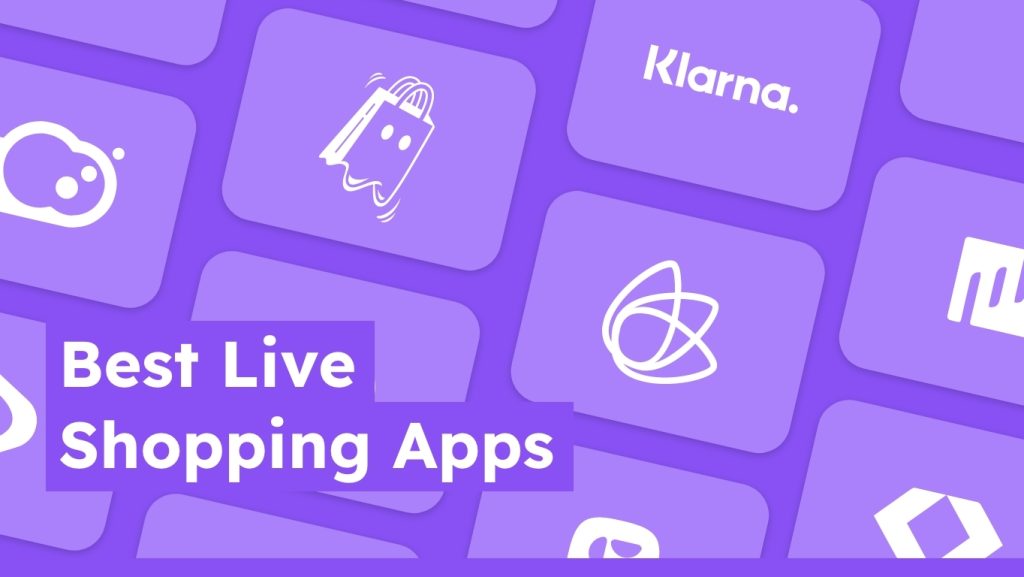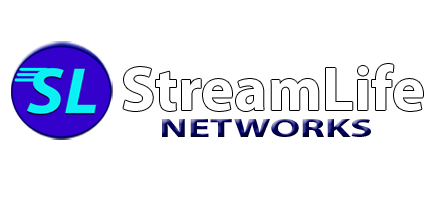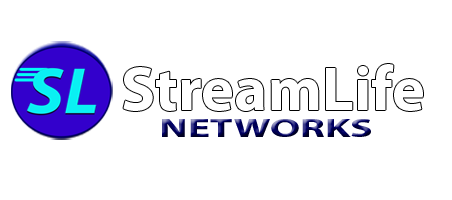23 Best Live Video Shopping Apps [Updated 2024]
- by admin
- in Television
- on February 9, 2024

When it comes to offering live video shopping, retailers can choose from a wide range of live shopping apps.
The first step to choosing a live shopping app is understanding what type of live shopping experience you want to offer. We’ve broken down some of the best live shopping platforms below, including the categories they belong to, to help streamline your decision.
What is a live video shopping app?
Live video shopping allows customers to connect with a real human in a video experience, with the intent of browsing or buying products from a particular brand. There are two primary ways live commerce works. The first is through one-to-one live video shopping. These experiences are typically hosted on a retailer’s ecommerce site, and can often be accessed on demand, during specific hours. The primary use cases of one-to-one live video shopping relate to getting specific advice or guidance on an individual basis; somewhere between a personal shopper and an expert customer support agent. Dive into even more live shopping use cases over here.
In contrast, a one-to-many live video shopping app – similar to a QVC experience online – isn’t personalized at all. A brand will livestream a shopping event either on their own site, through social channels, or through a dedicated livestream shopping platform. The livestream event will feature a host (or hosts) who will spotlight a merchant’s products. Customers may be able to interact with each other, or they might even be able to ask questions during the live stream. The typical uses cases of a one-to-many live video shopping event are to launch a new product or collection, do product demonstrations, run a promotion, or host a private / exclusive event for select customers.
Live video shopping apps run the gamut depending on what kinds of experiences a brand wants to create for live video shopping. And one-size-fits all is hardly the name of the game when it comes to live video shopping platforms. It may a lot of sense for a merchant to invest in both a one-to-one and one-to-many solution; each live shopping platform has its own benefits and uses.

Why should you offer live shopping?
Live shopping is already a massive industry in Asia, and is growing like crazy in Europe. CX-obsessed merchants are recognizing that for all the benefits of automation, sometimes a human touch is what’s necessary to convert a hesitant shopper into a happy customer.
The top reasons to offer live shopping include:
- Boost conversion rates: Give customers all the information and guidance they need to feel confident enough to hit checkout
- Increase AOV: Grow basket sizes by offering personalized 1:1 service and suggesting complementary items based on a customer’s unique profile
- Lower return rates: Provide customers the chance to assess their needs more thoroughly before buying, improving return rates
- Experience the theater of the store: Give shoppers the chance to visit a store they might never have the opportunity to visit in person
- Enter the customer’s home: Get a real look at what a customer is dealing with – their space, wardrobe, or some other consideration – to find the right product
- Streamline customer support: Sometimes a shopper just has a very specific question that can be answered in seconds through video- rather than waiting for the back and forth tedium of typical chat or email channels
One-to-one live shopping apps
Get closer to customers by offering live one-to-one video shopping on your ecommerce site. With this type of live shopping app, customers can connect directly with a live shopping associate to get support and guidance while they’re online shopping.
Klarna (Hero)

Hero is a chatbot tool that allows shoppers to connect to a live shopping associate for video support. Within a video call, a shopping associate can send product links via chat. In addition, brands can offer pre-recorded video of specific products. Checking out and adding products to cart is not part of the Klarna / Hero live shopping experience.
In 2021, Klarna acquired Hero, and now offers this one-to-one virtual shopping experience as part of their platform for businesses. Meaning, you can no longer acquire Hero’s video shopping service independently; you must be a Klarna customer to use this function.
Klarna is best suited for:
- Existing Klarna customers
- Brands looking to offer video support on top of their existing chat function
giosg

Finland-based giosg is all about creating as many touchpoints for interactivity on a website as possible, through chatbots, live chat, and video chat functionality. With video chat, customers can get their questions answered without needing to type back and forth with a support agent.
It’s worth noting that giosg is more of a multi-functioning chat tool, as opposed to specifically designed for live shopping. Their product is specifically geared toward sectors like car dealerships and realtors, where purchases have a high level of consideration, but may not actually be bought within a call.
giosg is best suited for:
- Brands looking to offer video chat support as well as other more traditional channels
- Service-based industries like automotive or real estate

Tulip

Like giosg, Tulip’s live video commerce function largely focuses on providing chat interactivity, as opposed to co-shopping. As an omni-channel retail services provider, the primary function of Tulip’s live shopping is for brands with a strong clienteling element. Personal shoppers can curate items for specific customers, book appointments, and conduct outreach, as opposed to being more of a universal service that any shopper can access.
Customers that use Tulip’s LiveConnect tool are typically customers of Tulip’s other services, such as their checkout or fulfillment solutions. Like with Klarna, isolating the video shopping tool of Tulip isn’t really an option.
Tulip is best suited for:
- Clienteling-focused brands
- Existing Tulip customers
Salesfloor

If personal shoppers are a major aspect of your business, then Salesfloor might be the ideal solution. The platform is specifically designed for sales associates to manage their client book by creating personalized storefronts, interacting via chat, emails, and video calls, and booking appointments.
While Salesfloor can be adapted to appear on every page of a retailer’s website and accessed by anyone, the primary aim is for associates to use these interactions to further build one-to-one personal relationships with customers. This tool works especially well for brands with commission-based salespeople that are looking to manage their client base more efficiently.
Salesfloor is best suited for:
- Clienteling-focused brands
Whisbi

The promise of a platform like Whisbi is really routed in a more classic sales experience. Positioning itself as an advanced alternative to a typical chatbot or form, Whisbi is a live selling platform that includes live streaming and interactive video and text chat functionality.
While Whisbi’s feature set can be leveraged by retailers, it’s just one segment the company focuses on. Many of their success stories are in telecom, automotive, banking and insurance, and electronics, where customers require more hands on customer support than traditional channels may allow for.
Whisbi is best suited for:
- A range of industries beyond retail, including telecom, automotive, and banking
- Businesses looking to provide both live video support and live streaming
SnapCall

Considering it has an integration with ZenDesk, LiveChat, Intercom, and Kustomer, SnapCall is really all about elevating the customer service experience in a more hands on way – think of it like a video chat with some social sharing features. During a SnapCall session, associates can send snapshots of products during a call or demonstrate a product over video. They can also stream YouTube videos to provide other examples of a product in use. Customer service associates can also send over products for a customer to consider buying.
There’s also the option to create multiparty calls, with up to four participants on a single session, or a one-to-many experience that’s still in early development. Given SnapCall’s affiliation with customer support, a multiparty call could be a powerful way to get multiple B2B buyers onto a single call where the decision may not be in a single customer’s hands.
SnapCall is best suited for:
- Retailers looking to up their customer support game
- Brands where multiple buyers may need to weigh in on a purchase
Talkative

Talkative doesn’t call itself a live shopping app, per se. Instead, it identifies as a ‘Consultive Service Platform’. Or to put it another way, an all-in-one customer service solution, no matter how your customers are looking for support. This means everything from a hyper-impersonal AI-powered chatbot, through to video chat, live chat, and the ability to co-browse or screenshare.
However, each of these functions doesn’t necessarily add up to a coherent co-shopping experience. You can offer video chat, but it requires a separate step initiated from a video call or live chat – and there’s no instant sharing of product pages, add to bag functionality, or in-experience checkout.
Talkative is best suited for:
- Brands looking to add multi-channel support options to their site
- Companies where making a purchase during a call is less of a focus (ex: real estate or cars)
One-to-many live shopping apps
A one-to-many live shopping event is sort of like taking the classic QVC or Home Shopping Network experience and bringing it online. Brands choose a live shopping host (or hosts) who lead a presentation. Attendees can join 1:many live shopping events at random and may be able to communicate with each other, but likely can’t connect directly with the host, unless they’re answering questions at some point.
Livery

One of the biggest concerns for live one-to-many shopping events is having the firepower behind your live streaming shopping experience. Livery heavily promotes its potential for scalability, including syncing up with ecommerce inventory and functions for live shopping showcases.
A fun feature of Livery is the fact you can incorporate other interactive elements in your live streaming event, such as polls, quizzes, and more. It’s definitely worth noting that Livery isn’t specifically a live shopping platform. Instead, it touts itself as a livestream platform that has ecommerce capabilities as a specific module, much like their quiz or chat modules.
Livery is best suited for:
- Brands with multi-faceted livestreaming needs beyond ecommerce
- Livestream-focused brands looking to produce entertainment and interactive experiences

